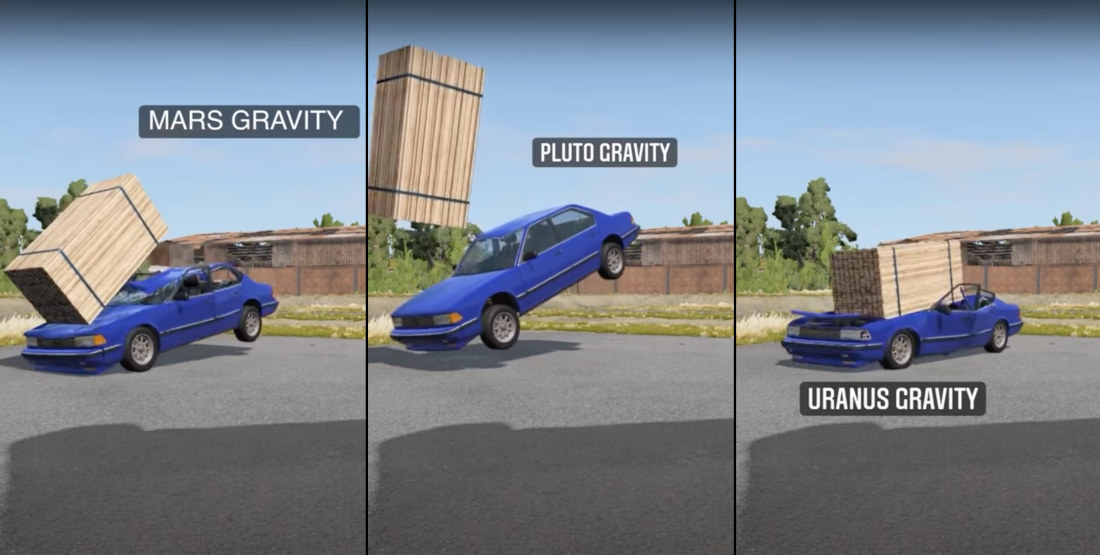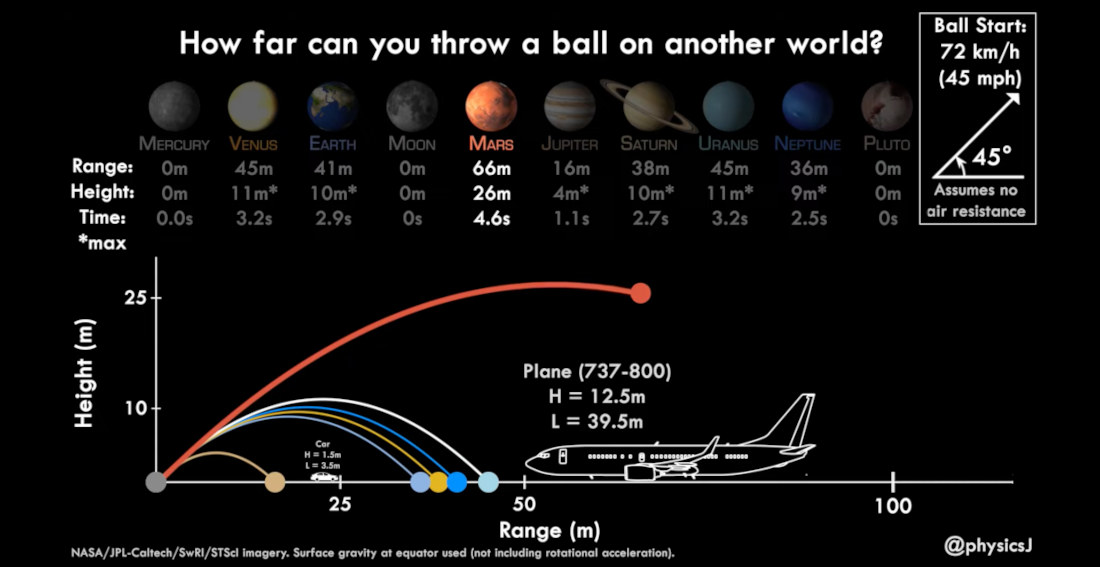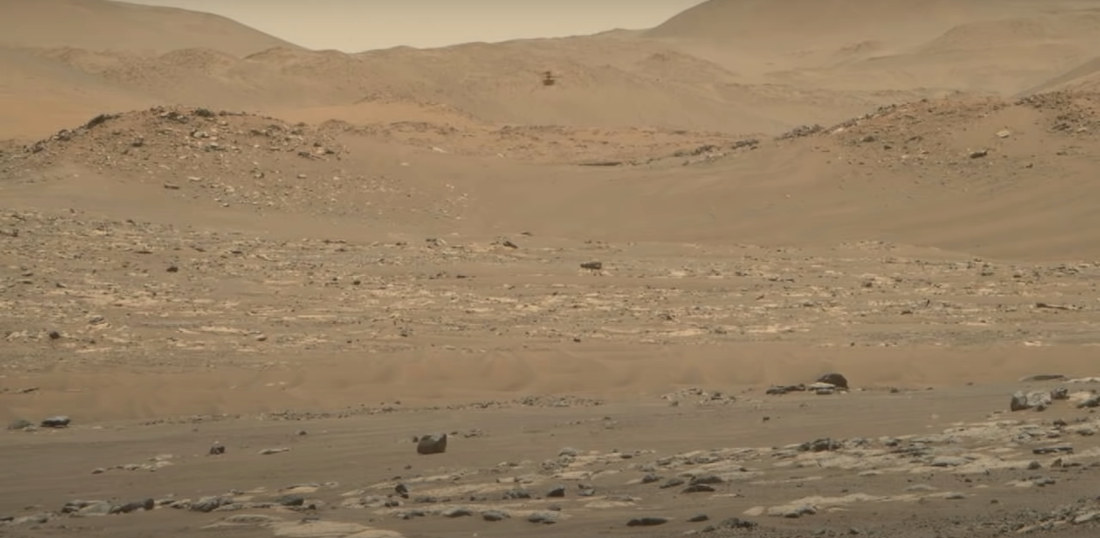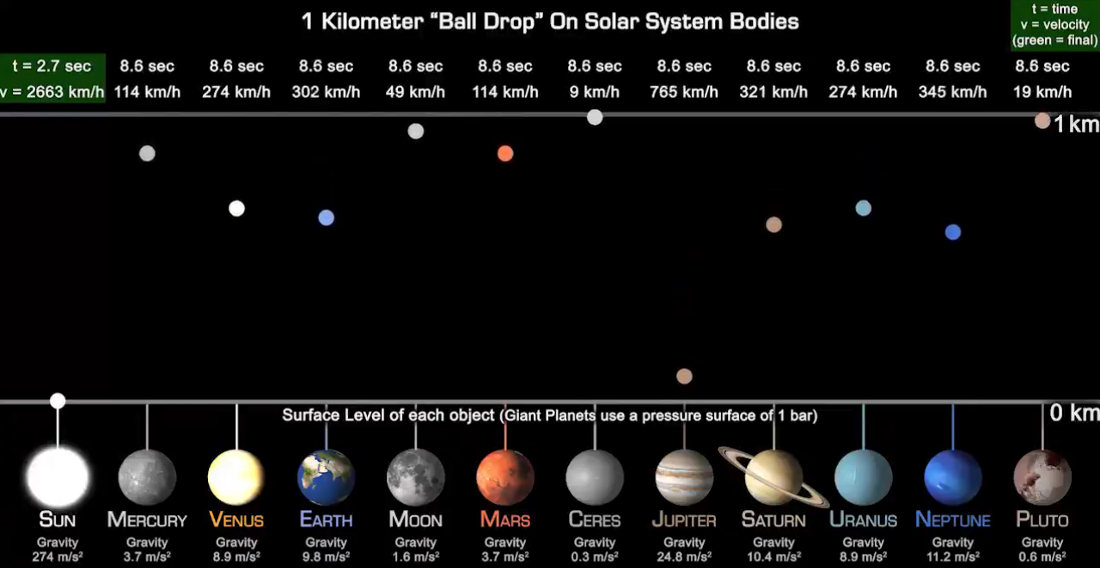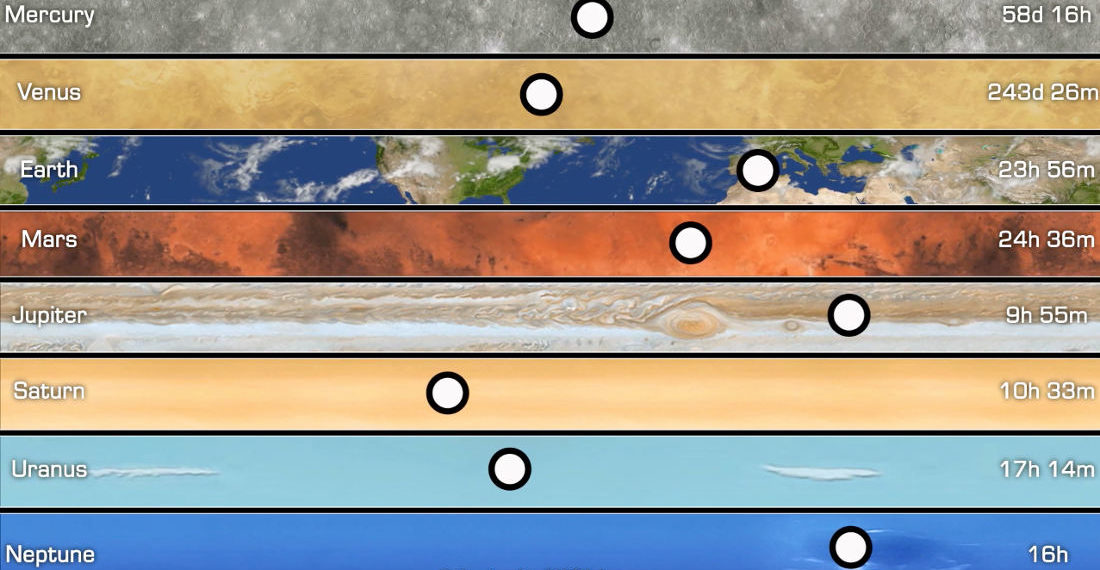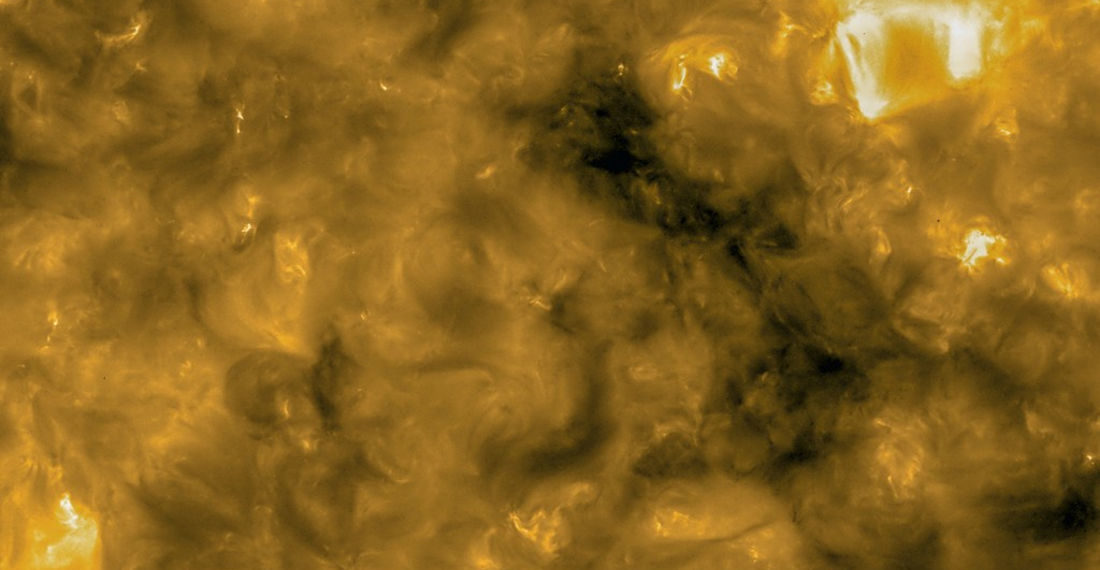
the solar system
This is a computer simulation of a pallet of wood being dropped on a car to visually compare the effect of gravity on different planets in our solar system. Is it accurate? Hell if I know. It was fun to watch though. And if it is accurate, I actually learned
This is a video from Japan Aerospace Exploration Agency (JAXA) planetary astronomer Dr. James O’Donoghue (previously), detailing how far you’d be able to throw a ball on other planets compared to on earth. I learned a lot by watching it. Mostly, that I’m not convinced I could even throw a
This is a video of the Ingenuity rotorcraft (upper middle of screencap) flying above the Martian surface. Ingenuity, the first flying craft deployed by humans on another planet, flew approximately 700-feet at an altitude of 26-feet before landing. The footage, albeit relatively unimpressive to watch if you pretend this is
Gravity: I wish it wasn’t so strong on earth. But only for me, I wish it was doubly strong for everyone else. But enough daydreaming about me leapfrogging over everyone all day, this is a visualization created by planetary space scientist James O’Donoghue comparing the gravity on various bodies of
This is a video created by Dr James O’Donoghue of the relative sidereal rotation periods of planets in 2-D. Sidereal meaning relative to background stars, of course. “Of course.” As you can see– “Uranus is backwards.” Like a front-butt? I don’t think so. No, what I was going to say
Note: The whole photo can be seen HERE. This is the closest photo captured of the sun to date, taken by the European Space Agency’s Solar Orbiter satellite from a distance of 77-million kilometers. It features thousands of small solar flares scientists have nicknamed campfires. Some more info while I
Things people say
- Eric Ord on Find The Frog
- Kent on Maserati SUV Driver Mistakes His Vehicle For Functional Off Roader, Gets Stuck In Flood
- born in space on Mouse Sneaks Out Of Hiding Spot In Stove To Steal An OREO
- 1-Ton on Footage Of Statue Of Liberty Shaking During The Recent Earthquake
- Enkidu98 on Pacers Use Filter To Make Lakers Fans Cry On Jumbotron During Defeat
- April 16, 2024
- April 15, 2024
- April 15, 2024
